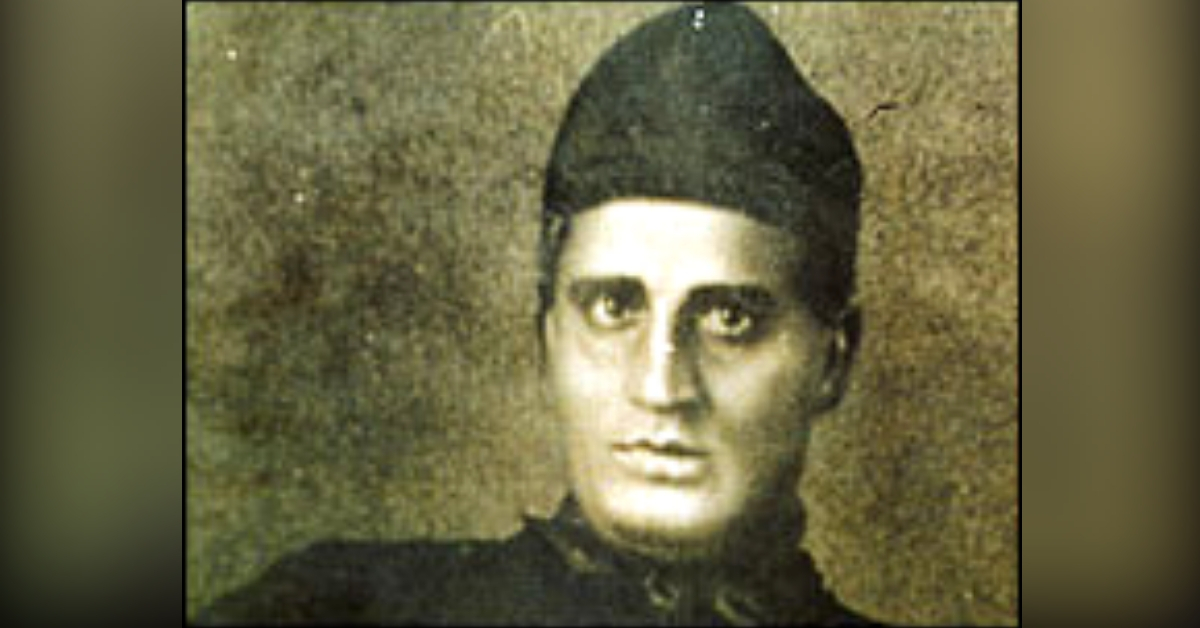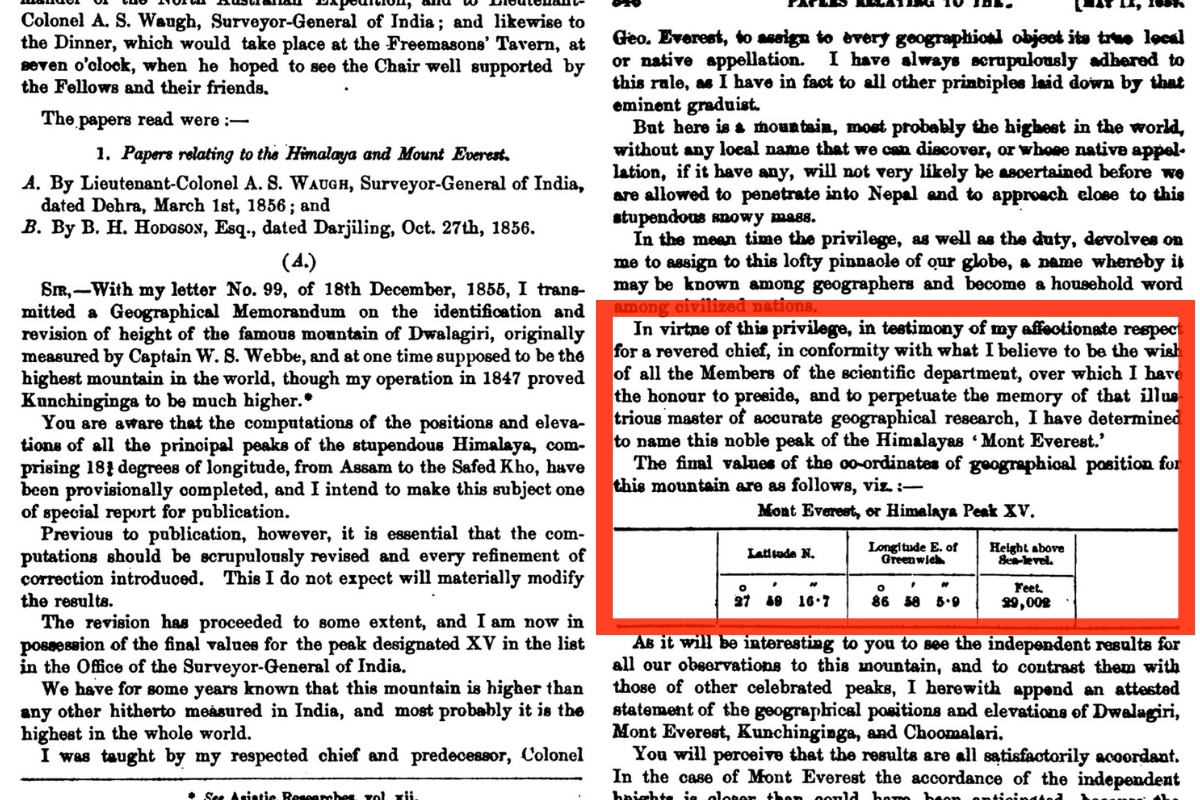This Brilliant Bengali ‘Computer’ Discovered the World’s Highest Mountain Without Ever Climbing It!
“It was during the computations of the northeastern observations that Sikdar rushed on one morning in 1852 into the room of Sir Andrew Waugh & exclaimed, ‘Sir, I have discovered the highest mountain of the world’.

“Sir, I have discovered the highest mountain in the world!”
These were the words spoken by Radhanath Sikdar, a professional mathematician who was the first person to calculate the height of Mount Everest.
How did this man manage to accomplish a humongous task like this, despite not being a mountaineer?
Here’s how.
In 1831, George Everest, the Surveyor General of India, was in the pursuit of a mathematician who had specialised in Spherical Trigonometry, so that they could be a part of the Great Trigonometric Survey.
The GTS had originally started in Scotland and was brought to India as a geographical survey of the conquered territory after the British defeated Tipu Sultan.
Starting with Madras (now Chennai) the survey was extended to other parts of India as the British conquered more territory.

In 1832, under the leadership of Everest, the longitudinal series of the “triangle” survey was completed from Seronj (in Madhya Pradesh) to Calcutta (West Bengal).
While still working on mapping Calcutta, Bengal, Everest had begun his search for a mathematician, and soon enough, John Tytler, a professor of Mathematics at the Hindu (now Presidency) College, recommended 19-year-old Radhanath’s name.
Radhanath, a student of the college since 1824, was one of the first two Indians to read Newton’s Principia (the other being Rajnarayan Basak) and by 1832, he had studied Euclid’s Elements, Jephson’s Fluxion and Analytical Geometry and Astronomy by Windhouse.
Taking inspiration from these prestigious papers, he devised a new method to draw a common tangent to two circles, when he was just a teenager.
The editor of Gleanings in Science, which published his research (Vol III, 1831) wrote, “A good deal having appeared in the public prints lately, respecting the Hindoo College, it may not be uninteresting to publish the accompanying solution of a geometrical problem by one of the pupils there, Radhanath Sikdar. The solution is altogether his own discovery, and I have not altered a word in his composition.”
There was little doubt about Radhanath’s proficiency in his subject, and he secured the job at the GTS on 19 December 1831.
His designation was that of a ‘computer,’ and he earned a salary of 40 rupees per month.

Even as seven other Bengali ‘computers’ worked alongside him, Radhanath soon showed his superior skills in mathematics and became Everest’s favourite colleague. So much so, that he once stopped his transfer to another department. Radhanath’s job was to carry geodetic surveys—the study of the earth’s geometric shape orientation in space and gravitational field. He did not just use the established methods but invented his own to accurately measure these factors.
Everest, as well as Radhanath’s other colleagues, were no doubt, impressed by the skills he brought to the table.
In a letter to Radhanath’s father, Tituram, Everest wrote, “I wish I could have persuaded you to come to Dehra Dun for not only would it have given me the greatest pleasure to see you personally how much I honour you for having such a son as Radhanath, but you would yourself have, I am sure, been infinitely gratified at witnessing the high esteem in which he is held by his superiors and equals.”
Everest retired in 1843 and was succeeded by Colonel Andrew Scott Waugh. Eight years later, in 1851, Radhanath was promoted to the position of Chief Computer and transferred to Calcutta. Here, he was also a superintendent for the Meteorological Department.
This is when Radhanath started measuring the snow-capped mountains in Darjeeling. The brilliant mathematician, who had perhaps never seen Mount Everest (then called Peak XV) discovered in 1852 that the Kanchenjunga, which was considered to be the tallest in the world, wasn’t really so.
The honour belonged to Peak XV.

In a lecture, Kenneth Mason, a British geographer, said, “It was during the computations of the northeastern observations that a babu rushed on one morning in 1852 into the room of Sir Andrew Waugh, the successor of Sir George Everest and exclaimed, ‘Sir, I have discovered the highest mountain of the world.’ He had been working out the observations taken to distant hills. It was Sir Andrew who proposed the name Mount Everest, and no local name has ever been found for it either in the Tibetan or the Nepalese side.”
Sikdar had calculated the height at exactly 29,000 ft, but Waugh added an arbitrary two feet because he was afraid that the Sikdar’s figure would be considered a rounded number rather than an accurate one. He officially announced this finding in March 1856, and this remained the height of Mount Everest till an Indian survey re-calculated it to be 29,029 ft (8,848 m) in 1955.
Technological advancements, data from the thousands of climbers, and the discovery of different routes to the summit all have led to a more accurate calculation of the height of Mount Everest—a peak that grows at the rate of 4 mm every year and whose summit is slowly moving northeastwards each passing year.
However, the credit to recognise Mount Everest as the highest peak in the world undoubtedly goes to the young Bengali mathematician.

The “hardy, energetic young man, ready to undergo any fatigue, and acquire a practical knowledge of all parts of his profession” also contributed to modern mathematics, devising new formulas and applications. According to British historian, John Keay, “His greatest contribution to the computation was in working out and applying the allowance to be made for a phenomenon called refraction— the bending of straight lines by the density of the Earth’s atmosphere.”
Radhanath Sikdar passed away in May 1870, and while his name has gradually faded into oblivion, it would do us good to remember this gifted mathematician. Without his efforts, Peak XV would have just been another mountain in the Himalayas.
(Edited by Gayatri Mishra)
Feature image source: Wikipedia.
Like this story? Or have something to share?
Write to us: [email protected]
Connect with us on Facebook and Twitter.
This story made me
- 97
- 121
- 89
- 167
Tell Us More
We bring stories straight from the heart of India, to inspire millions and create a wave of impact. Our positive movement is growing bigger everyday, and we would love for you to join it.
Please contribute whatever you can, every little penny helps our team in bringing you more stories that support dreams and spread hope.



















